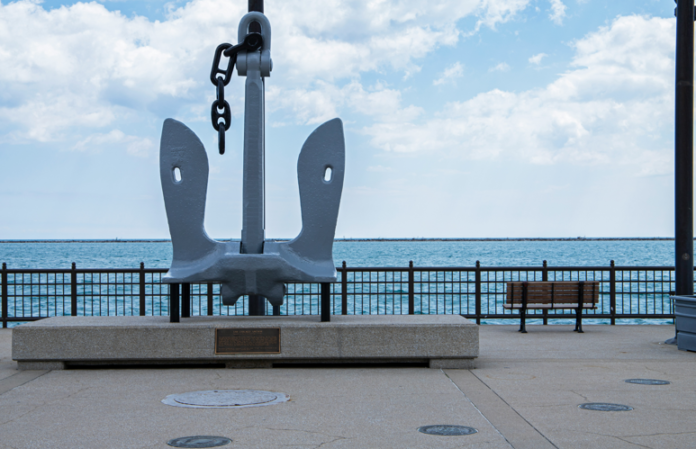Introduction to Primevue
Welcome to our blogpost “How To Anchor Component In Primevue“. If you’re venturing into the world of Vue.js, you’ve likely stumbled upon PrimeVue—a UI component library that makes building stunning applications a breeze. With its rich set of pre-designed components, developers can save time and focus on what truly matters: crafting amazing user experiences. But even with such powerful tools at your fingertips, there’s one skill that every developer should master to elevate their projects—anchoring components.
Anchoring in PrimeVue is much more than just a technical term; it’s about ensuring your application remains fluid and responsive as users interact with it. Whether it’s positioning modals or aligning dropdowns, understanding how to anchor components effectively can make all the difference in creating an intuitive interface.
Ready to dive deep? In this detailed guide, we’ll explore everything you need to know about anchoring components in PrimeVue—from the basics of what they are to step-by-step instructions for implementation. Let’s get started!
Understanding components in Primevue
PrimeVue is a powerful UI component library for Vue.js. It offers a vast range of ready-to-use components that enhance the visual appeal and functionality of your application.
Each component in PrimeVue serves a specific purpose. They can handle data display, user interaction, or even complex layouts. This modular approach allows developers to pick and choose components as needed, streamlining the development process.
Components are designed with flexibility in mind. You can customize their properties to fit your project’s requirements easily. From buttons to tables and dialogs, each element is built for ease of use while maintaining performance.
Understanding how these components interact with one another is crucial for building cohesive applications. By mastering this knowledge, you can elevate your development skills to create intuitive user experiences seamlessly.
What is anchoring and why is it important?
Anchoring in Primevue refers to the method of fixing a component’s position on the page. It ensures that when users interact with various elements, certain components remain visible and accessible. This is particularly useful for enhancing user experience.
The importance of anchoring lies in its ability to maintain context. For instance, if a navigation menu or floating action button stays put while scrolling, it provides continuous access without disrupting flow.
Moreover, well-anchored components can guide users through complex interactions seamlessly. They help minimize confusion and allow for smoother transitions between tasks.
User engagement increases significantly with effective anchoring techniques. When visitors know they can easily reach essential tools or information, their overall satisfaction improves. This ultimately leads to better retention rates and encourages repeat visits.
Step-by-step guide on how to anchor a component in Primevue
To anchor a component in Primevue, start by identifying the component you want to position. This could be anything from a button to a dialog.
Next, utilize the `v-model` directive for two-way binding. It ensures that your anchoring point updates dynamically based on user interactions or state changes.
Define specific CSS classes for your anchors. These will help control positioning and ensure consistency across different components.
Now, wrap your target element with an anchor wrapper. Use native HTML attributes like `data-attribute` if necessary to enhance functionality.
Leverage Primevue’s built-in methods such as `$refs`. They allow you direct access to DOM elements once they are mounted.
Test various screen sizes to confirm that the anchored component behaves as expected across devices and layouts.
Tips for effectively anchoring components
When anchoring components in Primevue, clarity is key. Start by ensuring your component’s purpose aligns with user interactions.
Use clear visual cues to guide users. Labels and icons can make a big difference in usability.
Position your anchor points strategically within the layout to maintain flow and accessibility. This enhances user experience significantly.
Consider responsiveness as well. Ensure that the anchored components function seamlessly on various devices and screen sizes.
Testing is essential too. Before finalizing, check how each component behaves under different scenarios to avoid surprises.
Keep documentation handy for future reference or updates you might need down the line—this saves time and effort later on!
Common mistakes to avoid when anchoring components
One common mistake is neglecting to set the correct z-index. If your anchored component is hidden behind other elements, users won’t be able to interact with it. Always ensure that your z-index value places it above competing layers.
Another pitfall is failing to consider responsiveness. Anchoring components in fixed positions can lead to layout issues on different screen sizes. Test your design across various devices for optimal performance.
Not using appropriate offsets can also cause problems. When you anchor a component too close to the edges of its container, it may appear cramped or cut off entirely. Aim for balanced spacing around your element.
Remember accessibility features. Avoid anchoring components without keyboard navigation support or proper ARIA attributes; this limits usability for many users and diminishes overall experience quality.
Conclusion
Anchoring components in Primevue offers a streamlined approach to managing your UI elements. It enhances user experience and improves functionality.
By understanding the process, you can create dynamic interfaces that resonate with users. Implementing anchoring techniques allows for better organization and accessibility of information within your application.
Remember, practice is key. The more you experiment with different components and their positioning, the more intuitive it will become.
Don’t hesitate to explore documentation or community forums for additional insights. Engaging with fellow developers can provide fresh perspectives on common challenges.
Each project presents unique requirements, so take the time to tailor your approach accordingly. Your commitment to mastering this skill will pay off as you build sophisticated applications using Primevue.
Frequently Asked Questions (FAQs)
Frequently Asked Questions (FAQs)
How do I install Primevue?
Installing Primevue is simple. You can use npm or yarn to add it to your project. Just run `npm install primevue` or `yarn add primevue`. Don’t forget to include the necessary CSS files for styling.
Can I anchor multiple components at once in Primevue?
Yes, you can anchor multiple components by following the same anchoring process for each component. Just ensure that their positions are set correctly to avoid overlapping.
What types of components can be anchored in Primevue?
You can anchor any draggable or resizable component in Primevue. This includes modals, panels, menus, and other user interface elements that require dynamic positioning.
Is there a way to customize the anchoring behavior?
Absolutely! You can customize the anchoring behavior using properties and event listeners provided by various components. For example, you may want to adjust how a modal behaves when it’s opened relative to its parent container.
Do I need advanced coding skills to anchor components in Primevue?
Not necessarily. The step-by-step guide provided earlier gives clear instructions on how anyone with basic knowledge of Vue.js and JavaScript can effectively anchor components without any hassle.
By addressing these common queries, we hope you feel more confident about working with anchors in your Primevue projects and making your application even more interactive and user-friendly.

